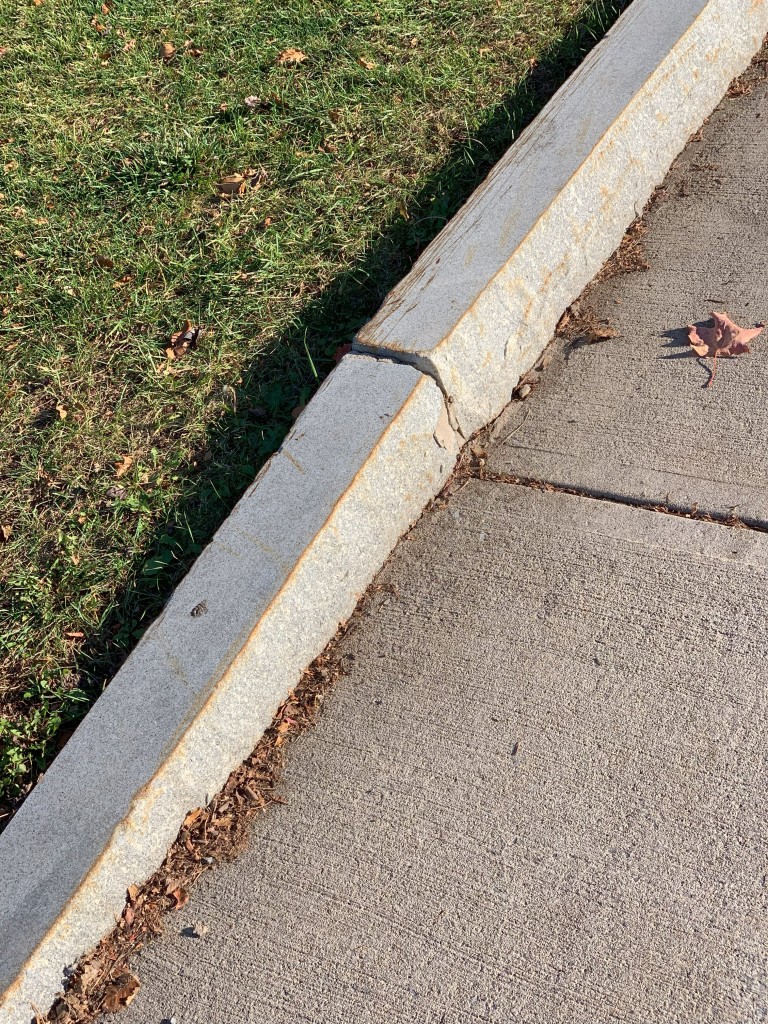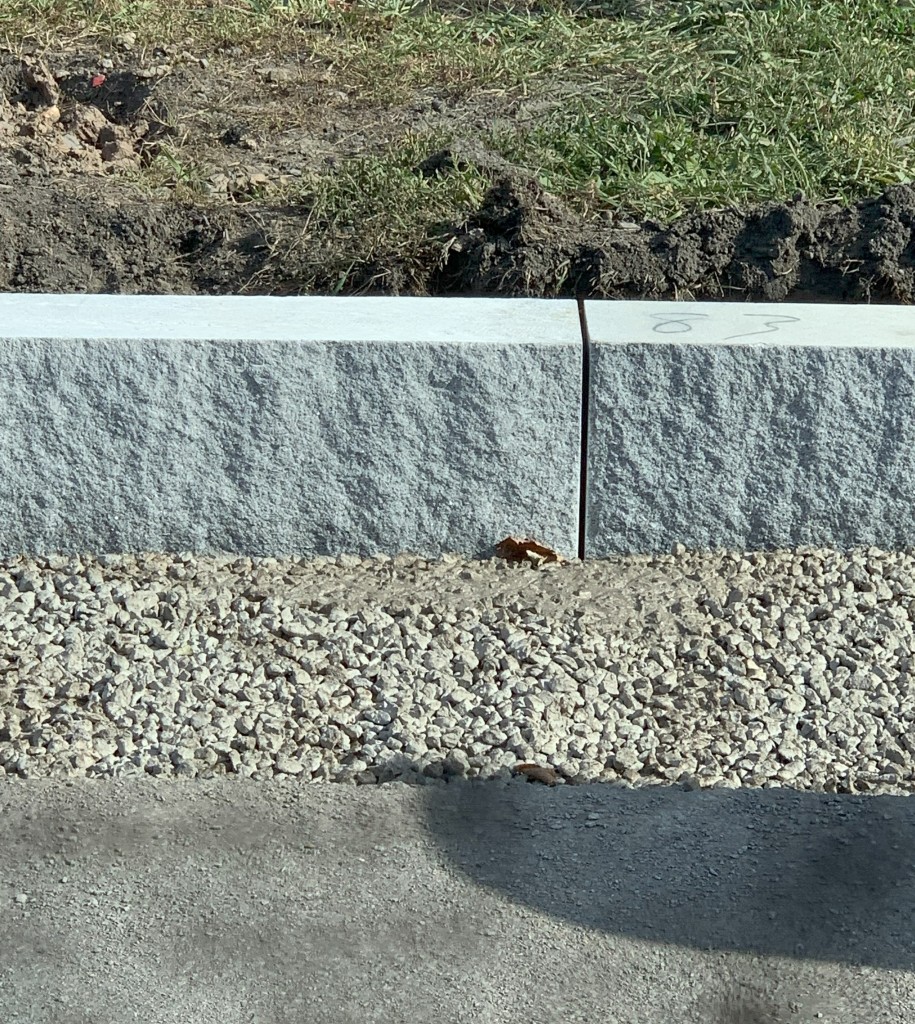One thing I’ve noticed about upstate New York is that they have some really nice curbs.

Stone sidewalk and curb, Lake Placid, New York
I first noticed the curbs on a college campus in Geneva, New York. They’re great components of the college landscape – granite, durable, long-lasting, probably hold up really well to the snowplows that I imagine are regularly operating in that gray, snowy place. Actually, I’m pretty sure the orange streaks on the stone are rust stains from the snowplows that scrape these curbs each winter.

Stone curb with rust stains, Geneva, New York
I figured that the granite curb was a campus standard, so I was a bit surprised when I noticed the same curb in nearby downtown Geneva, and then I really couldn’t believe it when I saw the curb design again on the side of some little state highway near a new strip mall and big box retail development in the middle of nowhere in the Finger Lakes region in New York. Apparently, the New York State Department of Transportation has the nicest design standards for curbs that I’ve ever seen for highway use, and it looks like the college campus decided to go with that standard.

New stone curb being installed, near Seneca Falls, New York
I’ve encountered some terrible curbs in Denver, where I live, including at one decaying median with disintegrated curb with a corroded rebar sticking out on a busy US highway that runs through south Denver. More typically, I see unreinforced concrete curbs cut up by snowplows and work trucks. No orange streaks of rust staining on these – the concrete seems to just get scraped off.

Damaged concrete curb, Denver, Colorado
Over time, the concrete disintegrates.

Detail of damaged concrete curb, Denver, Colorado
A big piece of granite will last a lot longer than a chunk of cast-in-place concrete. This natural stone material will cost more than concrete, but stone curbs may not cost more in labor than concrete curbs do, and labor costs these days are really something to consider. The granite will look better, year after year, even under harsh conditions that seriously damage other materials.
The old quality-time-cost dynamic is at play in the stone curb vs. concrete curb design question. We rarely get good quality, with fast construction time, with low cost. Something can be built well – good quality – but it’ll cost more and may take more time than producing something of lesser quality. Something can be built quickly, but compared to something built on a more typical schedule, it will either cost more or be of lesser quality, or both. Something can be built cheaply, but the quality is likely to be poor.
For me, quality always includes durability – effectiveness and appearance over the long term. A higher-initial-cost, more durable building component can cost less in the long run, because of lower maintenance costs over its service life. Durable building components almost certainly look better over the long term, too. With cheap materials, there is often a period of time after their beauty has been exhausted but before they have been replaced, during which they are unbearable to look at. Durable things age gracefully. The beauty of an object, whether it’s part of a building, a piece of furniture, a good quality leather bag, or even a curb on the side of the road, is an incentive to keep and properly maintain the thing so that it continues to serve its purpose. Those nice curbs last long, look good for decades, maybe centuries, even when scraped by snowplows, and therefore probably cost less in the long run. Win-win-win.